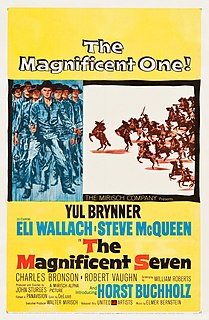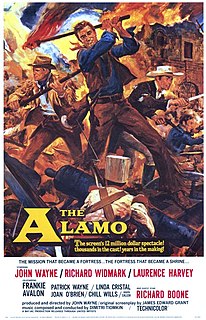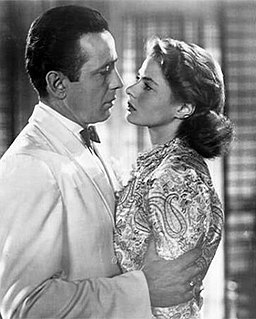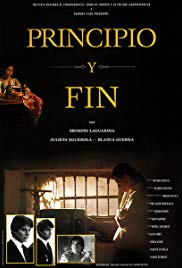A list of films produced in the Cinema of Mexico ordered by year of release in the 1960s. For an alphabetical list of articles on Mexican films see Category:Mexican films.
A list of films produced in the Cinema of Mexico ordered by year of release in the 1960s. For an alphabetical list of articles on Mexican films see Category:Mexican films.

Tex-Mex cuisine is an American and Texan cuisine that derives from the culinary creations of the Tejano people of Texas. It has spread from border states such as Texas and others in the Southwestern United States to the rest of the country.

The Magnificent Seven is a 1960 American Western film directed by John Sturges. The screenplay by William Roberts is a remake – in an Old West–style – of Akira Kurosawa's 1954 Japanese film Seven Samurai. The ensemble cast includes Yul Brynner, Steve McQueen, Charles Bronson, Robert Vaughn, Brad Dexter, James Coburn, and Horst Buchholz as a group of seven gunfighters, and Eli Wallach as their main antagonist. The seven title characters are hired to protect a small village in Mexico from a group of marauding bandits, led by Wallach.

The Western is a genre of fiction and film set primarily in the latter half of the 19th century and the early 20th century in the Western United States, which is styled the "Old West" or the "Wild West".

Mexican cinema dates to the late nineteenth century during the rule of President Porfirio Díaz. Seeing a demonstration of short films in 1896, Díaz immediately saw the importance of documenting his presidency in order to present an ideal image of it. With the outbreak of the Mexican Revolution in 1910, Mexican and foreign makers of silent films seized the opportunity to document its leaders and events. From 1915 onward, Mexican cinema focused on narrative film.
Doctor or The Doctor may refer to:
"La Bamba" is a Mexican folk song, originally from the state of Veracruz, best known from a 1958 adaptation by Ritchie Valens, a Top 40 hit in the U.S. charts. Valens's version is ranked number 345 on Rolling Stone magazine′s list of the 500 Greatest Songs of All Time. It is the only song on the list sung in a language other than English.

The Alamo is a 1960 American epic historical war film about the 1836 Battle of the Alamo produced and directed by John Wayne and starring Wayne as Davy Crockett. The film also co-stars Richard Widmark as Jim Bowie and Laurence Harvey as William B. Travis, and features Frankie Avalon, Patrick Wayne, Linda Cristal, Joan O'Brien, Chill Wills, Joseph Calleia, Ken Curtis, Ruben Padilla as Santa Anna, and Richard Boone as Sam Houston. Shot in 70 mm Todd-AO by William H. Clothier, it was released by United Artists.

A sexploitation film is a class of independently produced, low-budget feature film that is generally associated with the 1960s and early 1970s, and that serves largely as a vehicle for the exhibition of non-explicit sexual situations and gratuitous nudity. The genre is a subgenre of exploitation films. The term "sexploitation" has been used since the 1940s. Sexploitation films were generally exhibited in urban grindhouse theatres, the precursor to the adult movie theaters of the 1970s and 1980s that featured hardcore pornography content. The term soft-core is often used to designate non-explicit sexploitation films after the general legalisation of hardcore content. Nudist films are often considered to be subgenres of the sex-exploitation genre as well. "Nudie" films and "Nudie-cuties" are associated genres.
This is an index of lists of films by year, awards, countries of origin and genre among other factors.

Classical Hollywood cinema is a term used in film criticism to describe both a narrative and visual style of filmmaking which became characteristic of American cinema between the 1910s and the 1960s. It eventually became the most powerful and pervasive style of filmmaking worldwide. Similar or associated terms include classical Hollywood narrative, the Golden Age of Hollywood, Old Hollywood, and classical continuity.
A list of the most notable films produced in the Cinema of Mexico split by decade of release. For an alphabetical list of articles on Mexican films see Category:Mexican films.
Roberto Gavaldón was a Mexican film director.
Latin American cinema refers collectively to the film output and film industries of Latin America. Latin American film is both rich and diverse, but the main centers of production have been Argentina, Brazil and Mexico. Latin American cinema flourished after the introduction of sound, which added a linguistic barrier to the export of Hollywood film south of the border.

Nuevo Cine Mexicano, also referred to as New Mexican Cinema is a Mexican film movement started in the early 1990s. Filmmakers, critics, and scholars consider Nuevo Cine Mexicano a "rebirth" of Mexican cinema because of the production of higher-quality films. This rebirth led to high international praise as well as box-office success, unseen since the golden age of Mexican cinema of the 1930s to 1960s. The quality of Mexican films suffered in the decades following the golden age due in part to Mexican audiences watching more overseas films, especially Hollywood productions. This resulted in the rise of infamous Mexican genres such as Luchador films, sexicomedias and ultimately the low-budget direct-to-video Mexploitation film.

Mexploitation is a film genre of low-budget films that combine elements of an exploitation film and Mexican culture or portrayals of Mexican life within Mexico often dealing with crime, drug trafficking, money and sex.

The Beginning and the End is a 1993 Mexican drama film directed by Arturo Ripstein. The film was selected as the Mexican entry for the Best Foreign Language Film at the 67th Academy Awards, but was not accepted as a nominee. This film is an adaptation of the 1960 novel by Egyptian author Naguib Mahfouz.

Cage of Evil is a low-budget 1960 black and white crime film starring Ron Foster and Patricia Blair.
Frida Still Life is a 1983 Mexican drama film directed by Paul Leduc. The film was selected as the Mexican entry for the Best Foreign Language Film at the 58th Academy Awards, but was not accepted as a nominee.
Events in the year 1960 in Mexico.